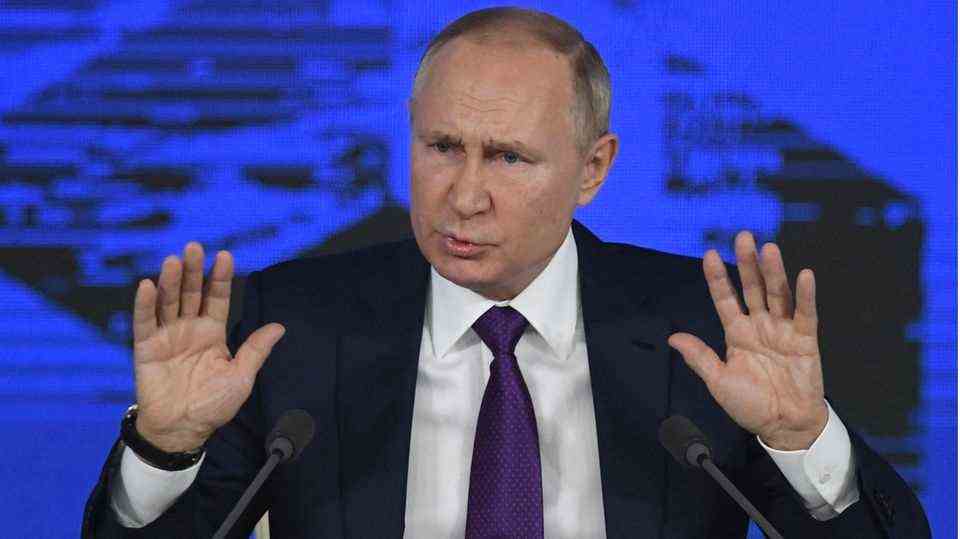2022 will be a year in which “predictable unpredictability” shapes life. That means: everything is included. These eight risks and trends will particularly affect the next twelve months.
What is left to say before this Christmas and New Year? It’s not the Christmas we were promised some time ago, and it’s not the New Year’s Eve that we hoped for a year ago. Not only because the German pyrotechnics industry is struggling to survive.
Everything is more subdued, more tense – we go into this festival of calm and contemplation with restlessness and uncertainty. And once again with a set of these complicated rules that make you wonder how they come about – and who wants to enforce them.
Scenarios hover over us, forecasts, counts that tower too steeply. 2022 will be a year in which “predictable unpredictability,” as the Economist aptly put it, will shape life. Which also means: everything is included. We have vaccines, new and adapted. We are not powerless, not at a loss.
Here are eight things – risks, events, and trends – that will shape 2022:
1. Everything on omicron
Look at the numbers in Denmark or Great Britain and you will guess what to expect. The toolkit of the pandemic, including the very rough tools, is unfortunately coming back on the table. The evil L-word still falls in the negative, but we know: you can never exclude anything.
We have to boost, boost, boost, and maybe the new inactivated vaccine from Novavax will convince the undecided. Corona drugs are another building block in the next phase when the pandemic becomes endemic. Unfortunately, 2022 will be another Corona year, year III.
2. The lights of the traffic lights
Things should finally get going in 2022. With wind turbines, hydrogen projects, power lines and wind parks. Doesn’t quite fit Omikron, the plan is still there: Money should be spent and everything should get faster. The latter will take another twelve months until the plan approval procedures are legally boosted.
But: The traffic light should light up, not flicker. That is in everyone’s interest. What can you do? Take another look around at home at Christmas: heating, roof, windows. Anything that doesn’t fit should be made to fit; you can already browse something on the KfW website. Or configure an e-car.
3. The perpetual debt
We now have the final accounts for 2020: The IMF has calculated that the world’s debts have increased by 28 trillion dollars, to 226 trillion dollars. “In 2020 we saw the largest increase in debt in a year since World War II,” wrote the IMF. Germany was right at the forefront, even had 240 billion euros on schedule for 2021, and is now pushing 60 billion euros of unused funds into the next year under the leadership of a smooth liberal finance minister.
Winter travel in Corona times: These rules apply in other countries
15 images
For the climate, for the great transformation. Not exactly textbook-like, but that’s not wrong. The money is needed. When looking at the big picture, one should bear in mind that despite the debt, fiscal policy will not become even more expansionary, the opposite is happening in most countries, the deficits will decrease (at least according to the plan), in relative terms even more so than after the financial crisis, as Bloomberg calculated.
4. China, the troubled superpower
The year starts with the Olympic Games, which have been causing diplomatic tensions for a few weeks – the US has made a commitment, the EU is still playing. One way or another, however, China will shape our economy, for good as well as threatening: So far, the huge empire has been pursuing a no-covid strategy, which disrupts the supply chains when a port is closed again.
Can China hold out at Omikron? The other risks remain: Evergrande, the tech crackdown, decoupling, Taiwan. China’s President Xi Jingping will continue to pursue his master plan for a technologically superior and autonomous superpower with all seriousness.
5. Cold war, hot war?
We are entering the New Year with the scenario of a possible war on Europe’s borders. Russia could fill the agenda of an entire Munich security conference, even blow it up, we are currently experiencing so much geopolitics, “brinkmanship” and threats.
With all the consequences for gas prices, defense policy and security. The idea that you could use the magic word Swift to solve everything by pinching off the Russian economy financially is an illusion.
6. Inflation – nothing but ghosts?
We have learned that inflation is only “temporary”. How temporary, we shall see when the year 2022 passes. In Europe we have energy price inflation that has not yet reached a peak, the other effects (VAT, etc.) expire in 2022.
The situation is different in the USA, where it is “temporarily” over, in other words rhetorically – and the US Federal Reserve is taking countermeasures. The central bank power for the monetary system is running out, interest rates are supposed to rise several times. One thing is clear: disrupted supply chains and a lack of materials do not make goods cheaper. Omikron changes and extends the game. Inflation will be lower than in 2021, but higher than in previous years.
For savers, this means negative real interest rates over a long period of time. For investors: it will be choppy. Many expect corrections as early as the first quarter – which also offers opportunities.
7. Green vibrations
Many of the company’s strategies now include milestones up to 2030 – and even up to 2050, although one shouldn’t give too much attention to them. This is all very vague, and the generation that has to push it through is currently studying in St. Gallen with a little luck. Now it’s about 2030.
The topic is drawn even closer to the board, it becomes more serious: If you don’t have a sustainability strategy in 2022, you no longer have a strategy at all. CO2 reduction is no longer just on websites and on Powerpoints (okay, that’s where it is), but it is becoming more concrete, more painful, more urgent, more measurable. If you think about who is relying on hydrogen everywhere and hoping, from ThyssenKrupp to HeidelbergCement, you should understand even more about it – and invest.
8. Agony after elections
Italy, recently named “Country of The Year” by the Economist, is facing a presidential election that could shake its astonishingly rational stability. Prime Minister Mario Draghi, who has made Italy a reliable player and even a role model (vaccination campaign), could change posts – which will set the finely balanced power structure in motion.
And could ensure a comeback for Silvio Berlusconi (yes, he is still alive.) The election in France in May is even more exciting, it can get dirty here because completely new figures are taking up positions on the right edge. Will Macron survive this? Possible. The third major election is the US congressional elections, which could herald the comeback of Donald Trump.
Joe Biden’s “Build Back Better” plan has just been killed by a Democratic senator – never before has a man moved so many trillions (or rather, made sure they didn’t move) Biden’s presidency, which has been going on since the summer lame, is in deep crisis.
Does that not sound like a good year to you?
These crises and risks do not mean that everything will turn out badly. Some have been with us for a long time, and I haven’t even listed everything – such as the tiresome Northern Ireland Protocol, which is still pending. It can also end well, tensions can be resolved: Europe, the USA and Russia could start a kind of new CSCE process, which is also Putin’s goal: He wants to sit at the table again, as a superpower.
Biden could still get his package and the elections are turning out better for him than expected. Italy could remain stable, Emmanuel Macron President. The traffic light could manage to shake Germany out of the Shire’s twilight sleep. Omicron boosters from April could take the scare away from the pandemic with large vaccination campaigns and new drugs. China could surprise the world economy yet again.
It is too early to check off a year that has not even started. Make the most of it.


